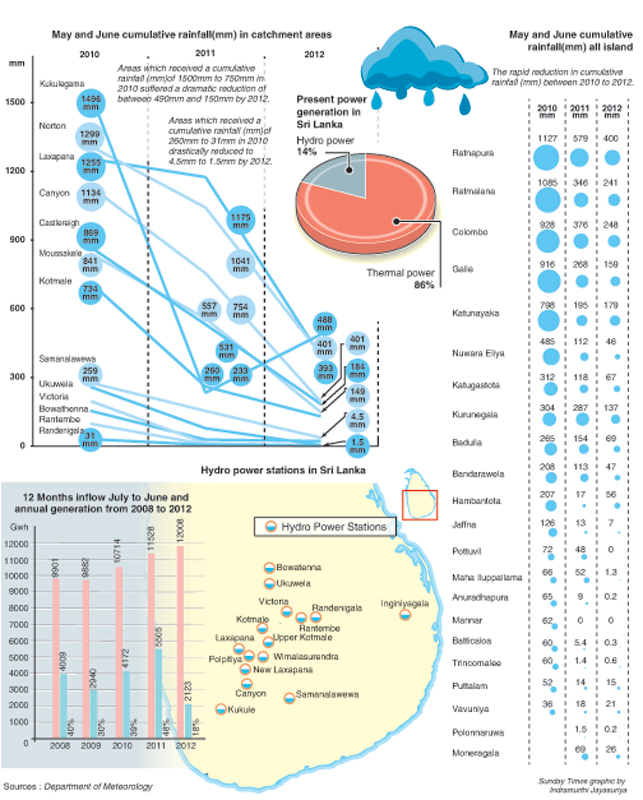News
Out of the dark for the moment
Despite the recent assurance by Power and Energy minister that the country will have a round the clock electricity supply, this week’s power cuts not only created inconvenience to the public but also generated apprehension about future blackouts.
Earlier this year, at the launch of a national programme on efficient use of electricity, Minister Champika Ranawaka said Sri Lanka was the only South Asian country that provided 24 hours of uninterrupted electricity.
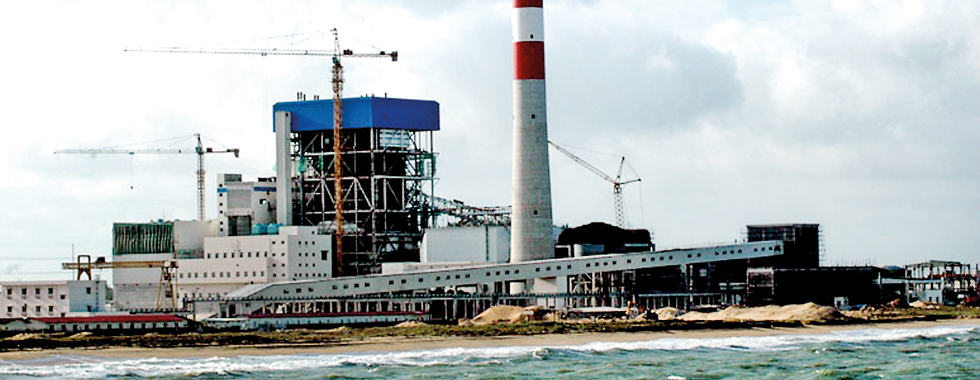
The Norochcholai power plant
But on Monday (23), the Ceylon Electricity Board (CEB) announced that Colombo city and 47 main towns in the country would have a two-hour and 15 minute power cut during the day and a 45 minute power cut in the night for several days.
This was announced following a breakdown at the Chinese built Norochcholai Lak Wijeya coal power plant and the Yugdanaw thermal power plant in Kerawalapitiya. The breakdown resulted in the loss of 400 megawatt (MW) to the national grid, of which 300 MW was from Norochcholai.
The country’s demand for electricity is about 2,000 megawatt (MW). But during periods of arid weather the demand goes up to about 2,300 MW.
“For India and rest of the subcontinent, daily blackouts are the norm and the people have come to accept it. For Sri Lanka, having continuous power is the norm. Blackouts are a serious matter, and people will remember those who manipulate and delay power projects at election time,” energy consultant engineer. Dr. Tilak Siyambalapitiya said.
In Norochcholai (Puttalam) the breakdown was the result of a damage to one of the tubes in the boiler economizer causing a leak. Three teams comripsing local engineers and technicians were appointed to look into the cause of the breakdown.
“The leak in a boiler tube requires a new replacement and this can be done only by shutting down. The repair is not costly, but the economic cost of power cuts and running diesel plants in full swing to prevent power cuts, is massive,” Dr. Siyambalapitiya said.
This is the fifth time the power plant was shutdown due to a breakdown since it was commissioned in March, 2011.
In January this year, the government had to bear the cost of about Rs.168 million due to the shutdown of the power plant, while in 2011, a fire broke out in a boiler room forcing the power plant to be shutdown for 55 days. In October 2010 too before operations had begun a fire broke out.
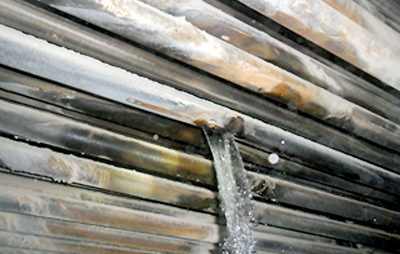
The damage in one of the tubes
The power plant was built by the China National Machinery Import and Export Corporation (CMEC) on a US$ 450 million loan from China’s EXIM Bank.
“Sri Lanka spent about Rs.50 billion on the project. The power plant provided 1,100 million units of electricity in 2011 (over 9 months of operation). This year, the power plant should have generated 2000 million units, but will probably be in the range of 1800 million units and frequent breakdowns would cause these targets to be missed,” Dr. Siyambalapitiya pointed out.
He said the issue of frequent breakdowns should be taken up at the highest level on a government to government level, rather than plant engineers dealing with the Chinese contractor.
Meanwhile, on Wednesday (25), the Ceylon Electricity Board (CEB) said the technical fault at the Kerawalapitiya power plant had been identified and the balance 100 MW would be added on Monday (30) once the damaged steam turbine was repaired.
“The replacing equipment at the Kerawalapitiya plant is flown in from the United States. It will take a few days to be installed and tests to be carried out,” Power and Energy Ministry spokesman Dhanushka Ramanayake said.
He said due to the cost factor, the equipment used at the Norochcholai power plant were re-conditioned ones.
“These equipments are used to full capacity; therefore there is a possibility of such technical faults. But this time the CEB did its best to avoid power cuts in Colombo city and investment zones,” he said.
The spokesman said since both the south-west and north-east monsoons didn’t bring the required rainfall to hydro-catchment areas, the CEB will continue to make losses. This situation will worsen if there are no rains in October-November.
Minister Ranawaka said the CEB suffers a loss of Rs.200 million a day as 85 per cent of the power generation is by thermal power.
Last year the breakdown in the Norochcholai power plant cost the CEB a whopping loss of Rs. 14 billion, the Sunday Times learns.
Meanwhile CEB Joint Trade Union Alliance convener Ranjan Jayalal said the Minister should be held responsible for the power cuts especially since he assured there won’t be any.
“The Minister is reluctant to question the quality of the equipment used by China. Such technical defaults are not acceptable, as this is happening for the fourth time. When our engineers were in China for a six-month training they did not experience such mishaps in the Chinese coal power plants,” he said.
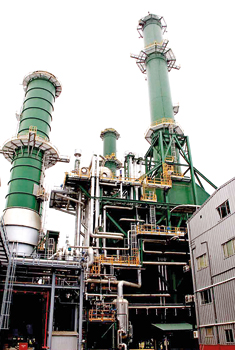
The thermal power plant at Kerawalapitiya
Meanwhile last week’s power cuts affected many small to medium scale businesses, students and offices. Economist and UNP MP Harsha de Silva said that power cuts though announced or unannounced would have an impact on small scale industries as they do not have enough capital to invest in back-up generators.
Jesudasan. M. owner of Soorya Enterprises that engaged in storing and distribution of fresh fish in Colombo 14, said power outages meant more money being spent on buying ice for the refrigerators, while a manager of a fresh fruit importer in Pettah said he will be forced to invest in back-up generators as power cuts can affect the freshness of fruits that are being distributed to supermarkets.
“Many of the small traders in this business who do not have the capital to invest are finding it difficult to make ends meet,” he lamented, adding that the power cuts only add to their burdens.Devni Rodrigo (18) an Advanced Level student from Wattala said the power cuts especially at nights affected studies.
“With only a few weeks for the exam, power cuts and the warm weather has made it difficult to concentrate on studies. This is harder as most of us are not used to studying under lamps or candles,” she said.
Nilantha Kumara, an owner of a garage said the blackouts affected work that required electricity.“From the use of a compressor a grinder and welding work all require electricity and these are affected by such power cuts. A two-hour blackout can cause a lot of loss for small scale businesses,” he said.

No plans to build nuclear power plant with Pakistan aid says minister
Power and Energy Minister yesterday said that the country had no plans to build a nuclear power plant in Sampur, Trincomalee, with the support of Pakistan. Minsiter Champika Ranawaka was responding to a news item published in an Indian weekly that stated, “Pakistan’s help to Sri Lanka for nuclear power plant alarms India.”
He said Sri Lanka had no plans to build a nuclear power plant in the near future and the only plans were to build a 500 MW coal power plant in Sampur with the assistance of the National Thermal Power Corporation of India.
“The Indian media is trying to sensationalise the issue especially with the Pakistan Foreign Minister’s official visit to the country next week. There has been no such discussion with the Pakistan Government to build a nuclear power plant,” he said.
The news report had stated, “Indian High Commissioner to Sri Lanka, Ashok Kantha was in New Delhi last week and is believed to have briefed senior officials on Pakistan’s recent advances in Sri Lanka.”“Our government is not aware of such a briefing,” the minister said adding that in the future nuclear power would be used as an energy source for agricultural work.
 Walk the talk: An awareness walk promoting 'energy saving' was held in Colombo yesterday with Minister Champika Ranawaka also participating. Ironically, at the same time Sunday Times photographer Indika Handuwela captured these street lights along the Moratuwa Korelawella area, that were burning bright during the day (below). |
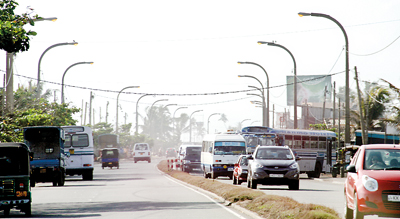 |






















